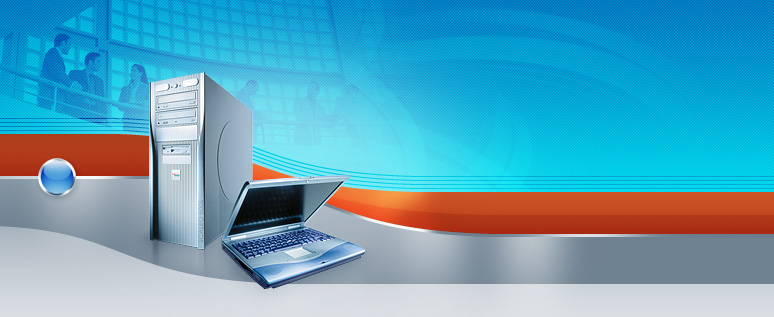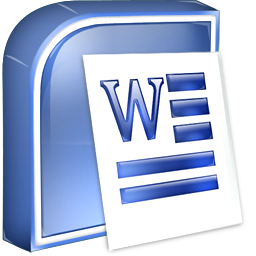
Learning Microsoft PowerPoint 2007
Contents
Chapter 1: Getting Started With PowerPoint
Starting a Presentation..............................................................................................1-1
The Microsoft PowerPoint Screen.........................................................................1-2
The Office Button............................................................................................ 1-2
The Quick Access Toolbar............................................................................. 1-2
The Ribbon......................................................................................................... 1-3
Zoom Controls..............................................................................................................1-5
Creating the Title Slide...............................................................................................1-5
Entering the Company Name..................................................................... 1-5
Formatting Text Using the Mini-Toolbar................................................. 1-6
Formatting Text Using the Ribbon............................................................ 1-7
Moving the Placeholder................................................................................ 1-9
Entering the Sub-Title Text........................................................................... 1-9
Saving the Presentation..............................................................................1-11
Adding a Background to the Slide..........................................................1-11
Creating a Second Slide.........................................................................................1-12
Inserting the New Slide...............................................................................1-12
Entering the Title...........................................................................................1-13
Entering the Points.......................................................................................1-14
Previewing the Presentation................................................................................1-16
Looking at the Slides....................................................................................1-16
Starting the Slide Show...............................................................................1-16
Slide Outlines.............................................................................................................1-18
Other View Buttons..................................................................................................1-19
Presentations Assignment 1.............................................................1-२०
Chapter 2: Using Graphics in Slides
Loading the Presentation.........................................................................................2-1
Creating the New Slide..............................................................................................2-1
Selecting the Slide Layout........................................................................................2-2
Entering the Slide Title...............................................................................................2-2
Inserting a Clip Art Image........................................................................................2-3
Resizing the Image......................................................................................................2-4
Adding Text to the Slide............................................................................................2-5
Previewing the Presentation...................................................................................2-7
Adding Another Image to the Presentation......................................................2-7
Adding Lines to the Slide..........................................................................................2-8
Line Styles.......................................................................................................... 2-9
Line Colours....................................................................................................... 2-9
Three-Dimensional Effects.........................................................................2-10
Adding Photos to Slides.........................................................................................2-11
Selecting the Slide Layout..........................................................................2-11
Entering the Title...........................................................................................2-12
Adding the Text..............................................................................................2-13
Adding a Photo..............................................................................................2-13
Inserting Another Photo.............................................................................2-15
Editing Text......................................................................................................2-16
Presentations Assignment 2.............................................................2-17
Chapter 3: Using Transitions
Loading the Presentation.........................................................................................3-1
Applying a Transition to One Slide........................................................................3-1
Slide Sorter View..........................................................................................................3-3
Altering the Order of Slides.....................................................................................3-3
Applying Transitions to Multiple Slides...............................................................3-4
Presentations Assignment 3............................................................... 3-
Chapter 4: Animation Effects
Loading the Presentation.........................................................................................4-1
Animating Text.............................................................................................................4-1
Text Entrance..................................................................................................... 4-1
Animating Just One Text Point................................................................... 4-4
Animating Words and Letters..................................................................... 4-6
Changing Animation Effects....................................................................................4-7
Removing Effects.........................................................................................................4-9
Animating Images....................................................................................................4-10
The First Image...............................................................................................4-10
The Second Image........................................................................................4-12
Exit Animations.........................................................................................................4-14
Changing the Animation Order..........................................................................4-16
Looping Animations................................................................................................4-16
Exercise 4-1.................................................................................................................4-17
Preset Animations....................................................................................................4-18
Adjusting Preset Animations................................................................................4-19
Presentations Assignment 4.............................................................4-20
Chapter 5: Adding Movie Clips to Slides
Loading the Presentation.........................................................................................5-1
Creating a New Slide..................................................................................................5-1
Selecting the Layout...................................................................................... 5-1
Entering the Slide Title................................................................................... 5-2
Adding the Text................................................................................................ 5-3
Inserting the Movie Clip................................................................................ 5-4
Adding a Movie Clip Message..................................................................... 5-5
Formatting the Movie Clip.......................................................................................5-7
Presentations Assignment 5............................................................... 5-9
Chapter 6: Adding Diagrams to Slides
Loading the Presentation.........................................................................................6-1
Creating a New Slide..................................................................................................6-1
Selecting the Layout...................................................................................... 6-1
Adding the Title................................................................................................ 6-2
Inserting the Diagram................................................................................................6-2
Entering the Chart Labels.........................................................................................6-3
Deleting Chart Boxes ................................................................................................6-4
Adding More Chart Boxes........................................................................................6-4
Formatting the Diagram...........................................................................................6-6
The Diagram Style........................................................................................... 6-6
Changing the Diagram’s Colours............................................................... 6-7
Adding Effects to the Diagram................................................................... 6-8
Formatting the Diagram’s Text.................................................................... 6-8
Changing the Diagram’s Layout................................................................. 6-9
Presentations Assignment 6.............................................................
Chapter 7: Formatting and Aligning Slide Content
Loading the Presentation.........................................................................................7-1
Creating a New Slide..................................................................................................7-1
Selecting the Layout...................................................................................... 7-1
Entering the Slide Title................................................................................... 7-2
The First Photograph..................................................................................................7-2
Inserting the Photograph............................................................................. 7-2
Adjusting the Shape Height........................................................................ 7-3
Formatting the Photograph........................................................................ 7-3
The Second Photograph...........................................................................................7-4
Inserting the Photograph ............................................................................ 7-4
The Format Painter Tool................................................................................ 7-5
Aligning the Photographs............................................................................ 7-5
The Third Photograph................................................................................................7-6
Inserting the Photograph............................................................................. 7-6
Formatting the Photograph........................................................................ 7-7
Aligning the Photographs............................................................................ 7-8
The Fourth Photograph.............................................................................................7-8
Inserting the Photograph............................................................................. 7-8
Formatting the Photograph........................................................................ 7-9
Aligning the Photographs..........................................................................7-10
Adjusting the Colour of Photographs...............................................................7-12
Presentations Assignment 7.............................................................7-14
Chapter 8: Inserting Tables in Slides
Loading the Presentation.........................................................................................8-1
Selecting the Layout..................................................................................................8-1
Entering the Slide Title...............................................................................................8-2
Adding the Table..........................................................................................................8-2
Entering the Table Items...........................................................................................8-3
The Table Styles............................................................................................................8-3
Formatting the Text....................................................................................................8-4
Column Widths.............................................................................................................8-5
Deleting Rows...............................................................................................................8-7
Adding Cells to the Table..........................................................................................8-8
Borders and Shading..................................................................................................8-9
Changing the Cell Shading.......................................................................... 8-9
Changing the Border Colour.....................................................................8-10
Presentations Assignment 8.............................................................8-11
Chapter 9: Inserting Charts into Slides
Loading the Presentation.........................................................................................9-1
Selecting the Slide Layout........................................................................................9-1
Entering the Slide Title...............................................................................................9-2
Inserting the Chart......................................................................................................9-2
Entering the Chart Data............................................................................................9-4
Editing the Chart.........................................................................................................9-6
Chart Layouts................................................................................................................9-8
Chart Styles....................................................................................................................9-9
Changing the Chart Labels......................................................................................9-9
Changing the Appearance of the Chart...........................................................9-10
Changing the Colour of the Columns....................................................9-10
Changing the Back Wall Colour................................................................9-11
Changing the Scale of the Axes..........................................................................9-12
Other Chart Types....................................................................................................9-13
Animating Charts.....................................................................................................9-14
Presentations Assignment 9.............................................................9-16
Chapter 10: Action Buttons
Loading the Presentation......................................................................................10-1
Navigation Buttons..................................................................................................10-1
The Previous Slide Button..........................................................................10-1
The Next Slide Button..................................................................................10-3
Buttons That Open Specific Slides......................................................................10-4
The Jungle Safaris Button...........................................................................10-4
The Wild River Rides Button.......................................................................10-7
The Other Slides.............................................................................................10-9
Text Buttons..............................................................................................................10-10
Buttons That Play Sounds....................................................................................10-11
Buttons That Open Other Presentations........................................................10-13
Loading the Presentation........................................................................ 10-13
Adding the Button..................................................................................... 10-13
Linking the Button..................................................................................... 10-16
Removing Action Buttons...................................................................................10-19
Presentations Assignment 10.........................................................10-20
Chapter 11: Text Formatting
Loading the Presentation......................................................................................11-1
Creating Sub-Points.................................................................................................11-1
Entering the Text............................................................................................11-1
Setting the Sub-Points.................................................................................11-2
Bullet Formats............................................................................................................11-3
Custom Bullets...........................................................................................................11-5
Turning Bullets Off...................................................................................................11-7
Looking at the Points in Outline View...............................................................11-8
Paragraph Spacing.................................................................................................11-10
The Whole Text............................................................................................ 11-10
Individual Lines........................................................................................... 11-11
Bullet Spacing..........................................................................................................11-12
Turning on the Ruler.................................................................................. 11-12
Adjusting the Indents............................................................................... 11-13
Spell Checking.........................................................................................................11-14
The Format Painter Tool.......................................................................................11-15
Presentations Assignment 11.........................................................11-16
Chapter 12: Self-Running Shows
Loading the Presentation......................................................................................12-1
Setting the PowerPoint Show..............................................................................12-1
Rehearsing the Timings...............................................................................12-1
Looking at the Timings................................................................................12-3
Making the Slide Show Continuous..................................................................12-4
Hiding a Slide ............................................................................................................12-5
Adding a Narrative...................................................................................................12-6
Saving the Presentation as a Show....................................................................12-7
Custom Shows...........................................................................................................12-8
Turning Rehearse Timings Off..............................................................................12-9
Presentations Assignment 12.........................................................12-10
Chapter 13: Delivering Presentations
Loading the Presentation......................................................................................13-1
Screen Tools................................................................................................................13-1
Identifying the Screen Tools......................................................................13-2
Using the Pen Tools.......................................................................................13-2
The Eraser Tool................................................................................................13-4
The Arrow Options........................................................................................13-5
The Slide Options Tool.................................................................................13-6
Speaker Notes............................................................................................................13-7
Using the Notes Page View........................................................................13-7
Using the Notes Master View ...................................................................13-8
Entering the Speaker Notes.................................................................... 13-13
Printing Speaker Notes............................................................................. 13-14
Handout Notes........................................................................................................13-16
Sending Slide Text to a Word Processor.........................................................13-19
Presentations Assignment 13.........................................................13-20
Chapter 14: Slide Masters
Loading the Presentation......................................................................................14-1
Opening the Slide Master View...........................................................................14-1
Looking at the Slide Masters................................................................................14-2
Applying a Theme....................................................................................................14-4
Altering the Formats of Each Slide.....................................................................14-4
The Title Text....................................................................................................14-4
The Text Content............................................................................................14-5
Adding Objects to Slide Masters.........................................................................14-8
Footer Items...............................................................................................................14-9
Presentations Assignment 14.........................................................14-१२
Chapter 15: Useful Features
Loading the Presentation......................................................................................15-1
Help Features.............................................................................................................15-1
Adding a Music Sound Track................................................................................15-4
Inserting a Music File....................................................................................15-4
Formatting the Sound.................................................................................15-5
Adding Movie Clips..................................................................................................15-7
Presentations Assignment 15...........................................................15-8
to download this course click here


